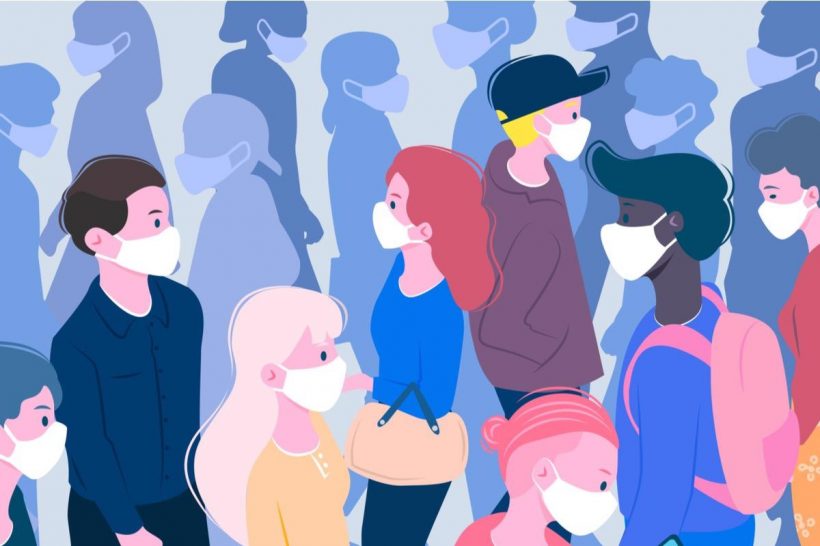A recent study posted to the medRxiv* preprint server assessed the dynamics of viral load (VL) of severe acute respiratory syndrome coronavirus 2 (SARS-CoV-2) Omicron and Delta variants of concern (VOC) post-vaccination and previous infection.

Various studies have reported the association between SARS-CoV-2 viral load and its infectivity. Hence, amid emerging reports of waning coronavirus disease 2019 (COVID-19) vaccine efficiency, it is essential to understand how viral load is impacted by vaccination status and COVID-19 history.
About the study
The present retrospective study aimed to assess the influence and dynamics of SARS-CoV-2 vaccination and previous infection on the SARS-CoV-2 Omicron VL over time. Also, the study compared the predicted infectivities of individuals vaccinated with two, three, or four doses with that of COVID-19-recovered individuals.
The team collected quantitative reverse transcription-polymerase chain reaction (qRT-PCR) cycle threshold (Ct) data of positive COVID-19 tests conducted between 15 June 2021 and 29 January 2022. This data was divided into two periods – between 15 June and 1 December 2021, when Omicron VOC was dominant, and between 28 December 2021 and 29 January 2022 when Delta VOC was dominant. The study also analyzed the SARS-CoV-2 nucleocapsid (N) and envelope (E) genes.
Multivariate linear regression analysis was performed on Ct values of the two viral variants considering age, gender, date of diagnosis, and vaccination status as covariates. The study classified the vaccination status of an individual as either unvaccinated or vaccinated with two, three, or four COVID-19 vaccine doses, or recovered from COVID-19 infection.
Cohorts vaccinated with two or three doses were further divided according to the number of days post their most recent vaccination: 10 to 39 days, 40 to 69 days, and over 70 days. Individuals vaccinated with the fourth dose were examined 10 days post their fourth vaccination. Recovered individuals were the ones who were diagnosed with PCR-confirmed COVID-19 at least 90 days before the current infection.
Results
The study results showed that among the 460,000 individuals eligible, Ct measurements for the SARS-CoV-2 N gene were obtained from 441,748 people while 328,865 measurements were collected for the E gene.
During the period when the SARS-CoV-2 Delta VOC was dominant, two vaccine doses showed a two-fold reduction in VL as compared to the unvaccinated people. The mean Ct evaluated within 10-39 days of the second dose received by two-dose individuals was 1.3 Ct units more as compared to that of unvaccinated individuals. However, these values dropped to unvaccinated VL levels by day 70 post-vaccination.
The VL levels observed within a month of the third vaccination in three-dose individuals were lower than those in the two-dose vaccinees which also declined to the VL levels of unvaccinated individuals by day 70. Notably, the VL observed in recovered individuals was similar to that of two-dose and three-dose individuals 10-39 days post-vaccination.
In the period of Omicron VOC dominance, a reduction in VL was observed only after the third dose vaccination with levels similar to those in recovered individuals. Otherwise, the VL levels differences between the unvaccinated, two-dose, and three-dose cohorts were negligible.
Also, the impact of vaccination status was less significant in Omicron infections as compared to the Delta infections as indicated by these cohorts when compared with the unvaccinated group. The relative Ct difference between the individuals recently vaccinated with the third dose and the unvaccinated or recovered people were lesser for Omicron than for Delta.
Furthermore, the administration of a fourth vaccine dose in individuals aged over 60 years showed VL levels that were only slightly higher than those of recovered individuals belonging to the same age group.
Conclusion
The study findings showed that the immunity induced by SARS-CoV-2 vaccines has an insignificant long-term effect lasting less than 70 days as indicated by the Ct values. The researchers believe that this study highlights the need to reassess the role of current vaccination policies in preventing COVID-19 infections for over two months.
*Important notice
medRxiv publishes preliminary scientific reports that are not peer-reviewed and, therefore, should not be regarded as conclusive, guide clinical practice/health-related behavior, or treated as established information.
- Yonatan Woodbridge, Sharon Amit, Amit Huppert, Naama M. Kopelman. (2022). Viral load dynamics of SARS-CoV-2 Delta and Omicron variants following multiple vaccine doses and previous infection. medRxiv. doi: https://doi.org/10.1101/2022.03.20.22272549 https://www.medrxiv.org/content/10.1101/2022.03.20.22272549v1
Posted in: Disease/Infection News | Healthcare News
Tags: Coronavirus, Coronavirus Disease COVID-19, covid-19, CT, Gene, Genes, immunity, Omicron, Polymerase, Polymerase Chain Reaction, Respiratory, SARS, SARS-CoV-2, Severe Acute Respiratory, Severe Acute Respiratory Syndrome, Syndrome, Transcription, Vaccine

Written by
Bhavana Kunkalikar
Bhavana Kunkalikar is a medical writer based in Goa, India. Her academic background is in Pharmaceutical sciences and she holds a Bachelor's degree in Pharmacy. Her educational background allowed her to foster an interest in anatomical and physiological sciences. Her college project work based on ‘The manifestations and causes of sickle cell anemia’ formed the stepping stone to a life-long fascination with human pathophysiology.
Source: Read Full Article






